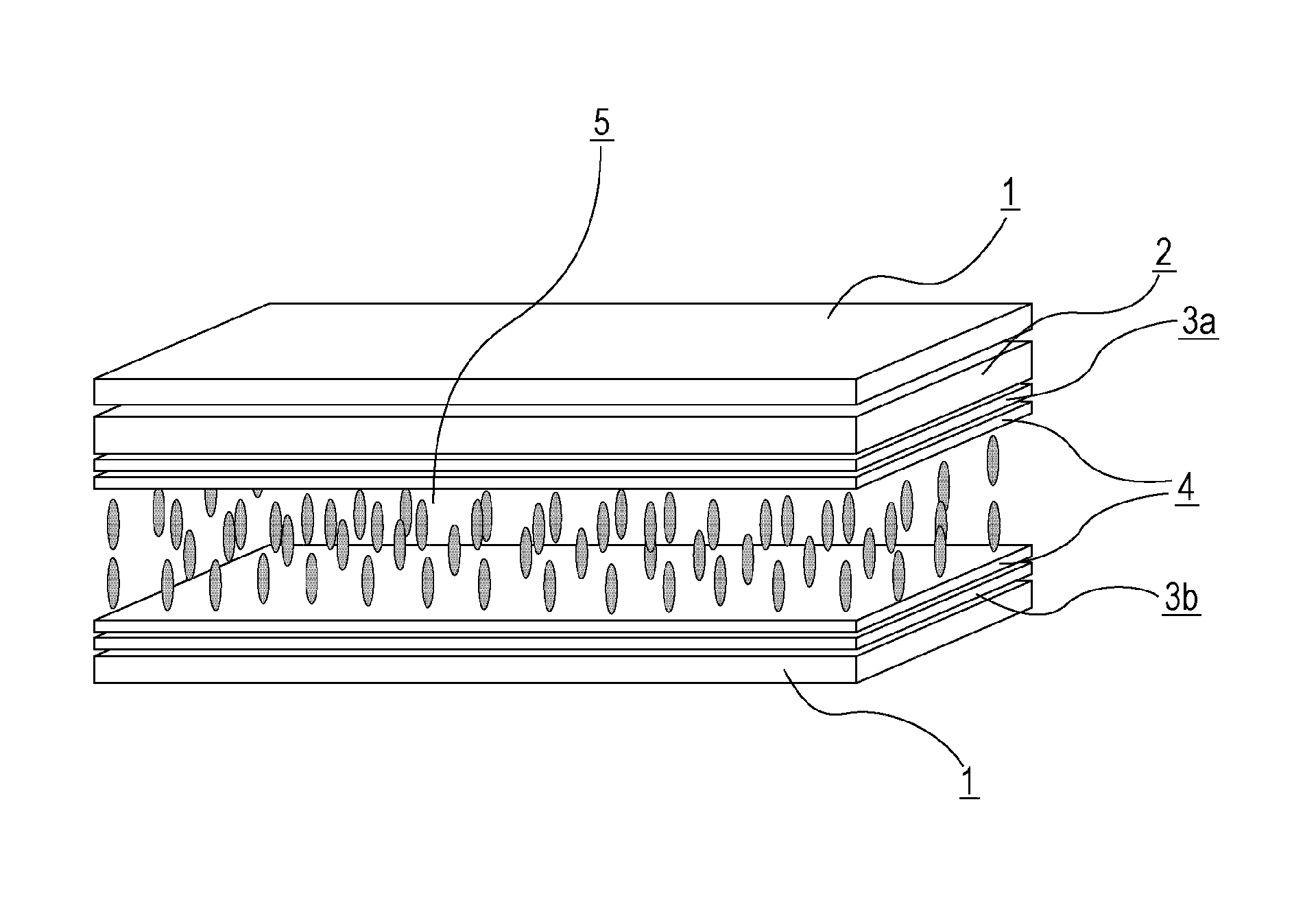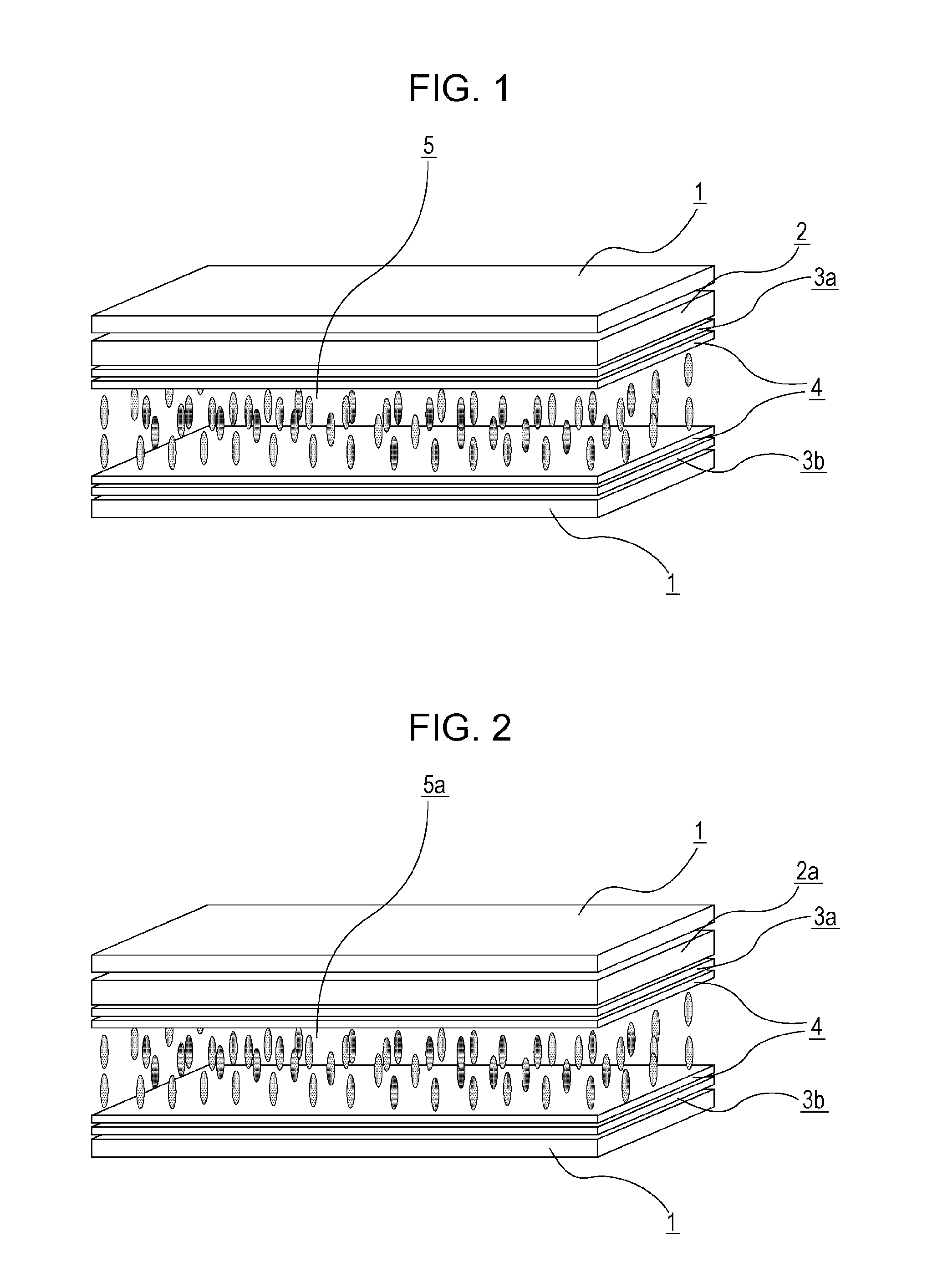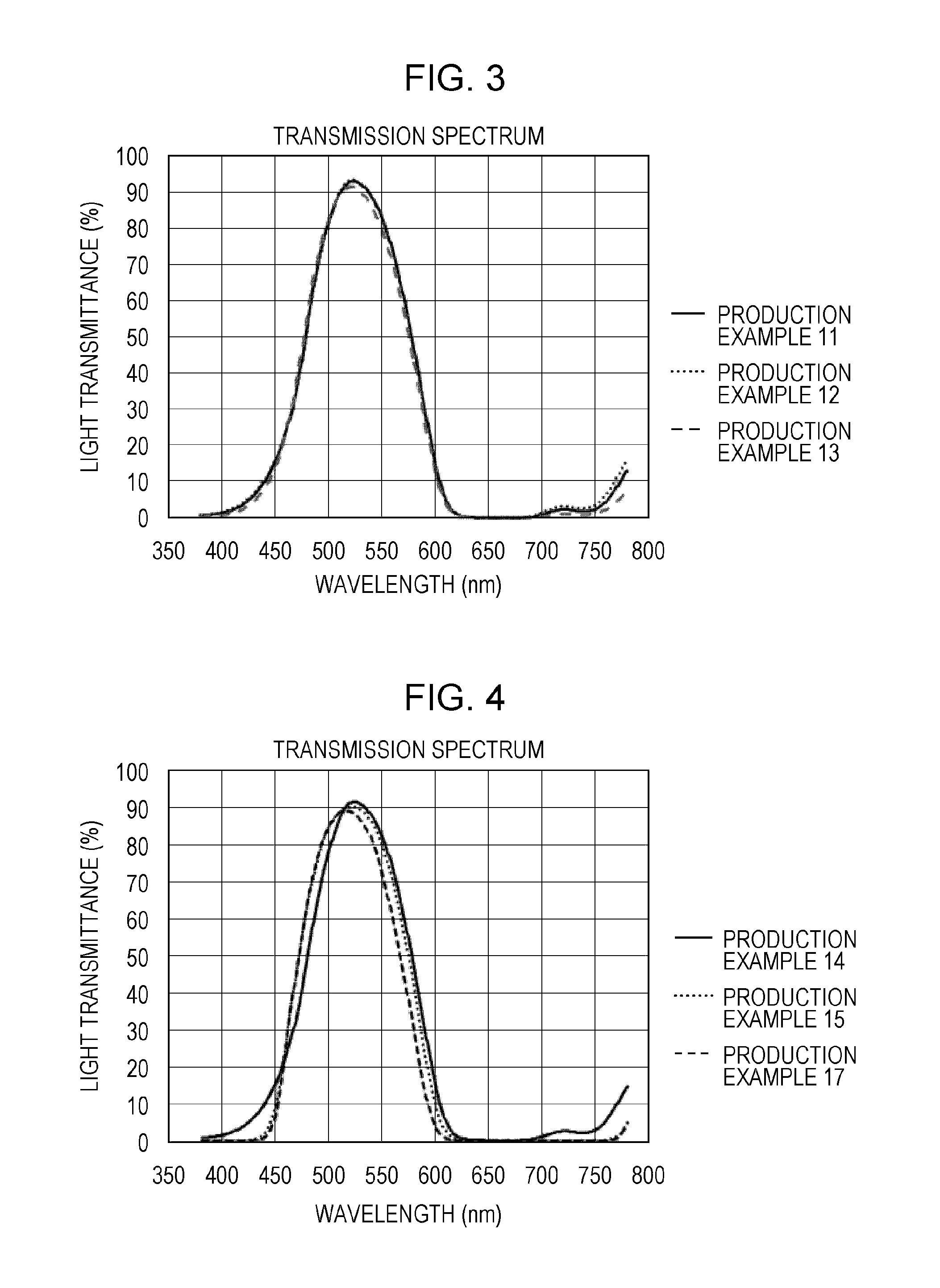Liquid crystal display device
a liquid crystal display and display device technology, applied in the direction of liquid crystal compositions, instruments, chemistry apparatus and processes, etc., can solve the problems of reducing the voltage holding ratio (vhr) of the liquid crystal layer, defective display including voids, and techniques that are not substantially different from merely reducing the impurity content, so as to prevent the decrease of the voltage holding ratio (vhr), prevent the increase of the ion density (id), and eliminate the defect of the display
- Summary
- Abstract
- Description
- Claims
- Application Information
AI Technical Summary
Benefits of technology
Problems solved by technology
Method used
Image
Examples
synthesis example 1
Synthesis of Copolymer a
[0241]In a nitrogen flow, 100 parts of xylene was held at 80° C.; and then a mixture of 68 parts of ethyl methacrylate, 29 parts of 2-ethylhexyl methacrylate, 3 parts of thioglycolic acid, and 0.2 parts of a polymerization initiator (“PERBUTYL® O” [active ingredient: t-butyl peroxy-2-ethylhexanoate, manufactured by NOF CORPORATION]) was added dropwise thereto under stirring over 4 hours. After the dropping was completed, 0.5 pats of “PERBUTYL® O” was added thereto every 4 hours, and the resulting product was stirred at 80° C. for 12 hours. After termination of the reaction, xylene was added thereto to adjust the nonvolatile content, thereby producing a xylene solution of a copolymer a with a 50% nonvolatile content.
synthesis example 2
Synthesis of Copolymer b
[0242]In a nitrogen flow, 100 parts of xylene was held at 80° C.; and then a mixture of 66 parts of ethyl methacrylate, 28 parts of 2-ethylhexyl methacrylate, 6 parts of thioglycolic acid, and 0.3 parts of a polymerization initiator (“PERBUTYL® O” [active ingredient: t-butyl peroxy-2-ethylhexanoate, manufactured by NOF CORPORATION]) was added dropwise thereto under stirring over 4 hours. After the dropping was completed, 0.5 pats of “PERBUTYL® O” was added thereto every 4 hours, and the resulting product was stirred at 80° C. for 12 hours. After termination of the reaction, a proper amount of xylene was added thereto to adjust the nonvolatile content, thereby producing a xylene solution of a copolymer b with a 50% nonvolatile content.
synthesis example 3
Synthesis of Polymer A
[0243]Into a flask equipped with a stirrer, a reflux condenser, a nitrogen inlet, and a thermometer, a mixture of 54.5 parts of xylene, 19.0 parts of the copolymer a obtained in Synthesis Example 1, 38.0 parts of the copolymer b, and 7.5 parts of a 20% aqueous solution of polyallylamine (“PAA-05” manufactured by NITTO BOSEKI CO., LTD., number average molecular weight of approximately 5,000) was put and then stirred at 140° C. under a nitrogen flow in order to perform a reaction at 140° C. for 8 hours while water was distilled off with a separator and the xylene was returned to the reaction solution.
[0244]After termination of the reaction, a proper amount of xylene was added thereto to adjust the nonvolatile content, thereby producing a polymer A as a modified polyamine having a 40% nonvolatile content. The resin has a weight average molecular weight of 10,000 and an amine value of 22.0 mg KOH / g.
PUM
| Property | Measurement | Unit |
|---|---|---|
| volume fraction | aaaaa | aaaaa |
| particle size | aaaaa | aaaaa |
| volume fraction | aaaaa | aaaaa |
Abstract
Description
Claims
Application Information
 Login to View More
Login to View More - R&D
- Intellectual Property
- Life Sciences
- Materials
- Tech Scout
- Unparalleled Data Quality
- Higher Quality Content
- 60% Fewer Hallucinations
Browse by: Latest US Patents, China's latest patents, Technical Efficacy Thesaurus, Application Domain, Technology Topic, Popular Technical Reports.
© 2025 PatSnap. All rights reserved.Legal|Privacy policy|Modern Slavery Act Transparency Statement|Sitemap|About US| Contact US: help@patsnap.com



